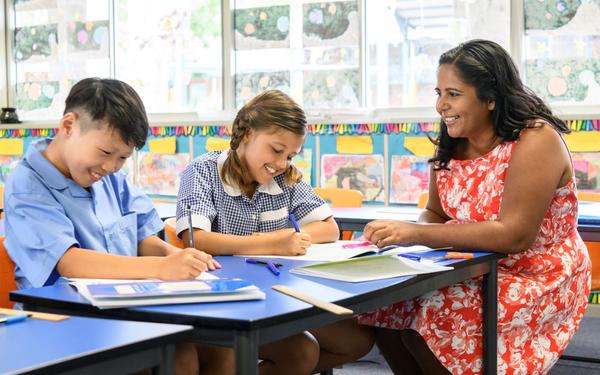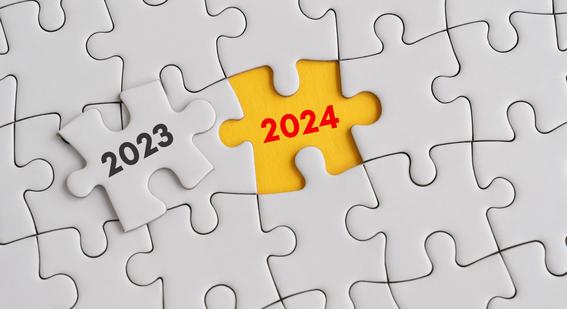Cultivating inclusion: Strategies for embracing diverse learners
Inclusive pedagogy, the practice of creating effective instruction that caters to the diverse needs of all learners, is paramount in school settings. It ensures every student feels valued, supported and empowered to reach their full potential.

This approach goes beyond mere tolerance for differences. Inclusive pedagogy actively celebrates diversity and recognises its profound impact on learning. It acknowledges that students come to the classroom with a wealth of experiences shaped by their cultural backgrounds, cognitive abilities, physical needs, and socio-economic realities.
The concept of neurodiversity recognises that human brains can function in a variety of ways and is increasingly recognised as a key consideration in education. Neurodivergent students, including those with attention deficit/hyperactivity disorder (ADHD), autism spectrum condition (ASC) or dyslexia, who differ from what society considers ‘typical’ at a particular time, may have different learning strengths and challenges. Inclusive pedagogy takes this into account, ensuring all students have access to meaningful learning experiences.
Cultural backgrounds, encompassing traditions, languages and values significantly influence how students approach learning, as do their prior experiences in education at school and at home.
Neurodiversity adds another layer to this complexity. Some students with ADHD may require frequent movement breaks to stay focused, while some with ASC may benefit from predictable routines and clear expectations. Physical and sensory disabilities also play a role, requiring teachers to adapt their teaching styles to accommodate individual needs.
Understanding learner diversity is the cornerstone of inclusive pedagogy. When teachers understand their students’ diverse needs, they can cater to them more effectively. This fosters a learning environment where every student feels seen, heard and able to engage effectively.
Key inclusive pedagogical strategies for policymakers
- Universal Design for Learning (UDL): This framework advocates for presenting information and providing opportunities for students to express their understanding in multiple ways. By incorporating visual aids, audio recordings and hands-on activities, teachers cater for diverse learning styles and ensure accessibility for all. UDL also promotes multiple means of engagement through choice, collaborative activities and differentiated instruction.
- Differentiated instruction: This approach recognises the "one size fits all" model doesn't work. Teachers differentiate content, process, and product to provide tailored learning pathways. Differentiated content might involve offering varied reading materials of different difficulty levels. Process differentiation could involve allowing some students to work independently while others work collaboratively. Product differentiation allows students to demonstrate their understanding through different means, such as essays, presentations, or creative projects.
- Culturally responsive teaching: This approach emphasises acknowledging, valuing, and integrating students' cultural backgrounds into teaching practices. Teachers can incorporate culturally relevant materials and examples into lessons, fostering a sense of belonging and connection for students from diverse backgrounds.
Addressing neurodiversity in the classroom
All students approach learning with strengths that can blossom in the right environment:
- Strengths-based approach: This approach focuses on leveraging the strengths of all students. A student with ADHD who struggles with written tasks might excel in group projects or an autistic student may focus more on detail. Recognising and nurturing these strengths fosters a positive learning experience and boosts self-esteem.
- Flexible learning environments: Creating classroom layouts and using tools that cater for different needs is crucial. Sensory spaces can provide a calm retreat for students with sensory sensitivities. Alternative seating options, such as exercise balls or standing desks, can cater for students who benefit from movement. Fidget tools and noise-cancelling headphones can help students stay focused and manage distractions.
- Multimodal teaching: Presenting information through various formats is essential. Visuals, including diagrams, mind maps and graphic organisers, can support visual learners. Hands-on learning opportunities can benefit those who learn best by doing. This multimodal approach ensures all students can grasp concepts through their preferred learning channels.
Accessibility in teaching, learning and assessment
Technology plays a crucial role in promoting accessibility in education – but there are other options as well:
- Assistive technology: Tools like text-to-speech software, speech-to-text programs, screen readers and graphic organisers can empower students with diverse needs. These tools remove barriers and allow all students to engage meaningfully with the learning materials.
- Alternative assessments: Moving beyond traditional exams is key. Portfolios showcasing student work overtime allow teachers to track progress, provide feedback and identify areas of strength and challenge. Projects that ask students to demonstrate their understanding in creative ways, presentations that allow students to share their knowledge with the class and demonstrations that enable students to showcase practical skills are all valuable and valid assessment tools.
- Flexible deadlines and support structures: Recognising that students learn at different paces and may have extenuating circumstances, flexible deadlines are essential. Providing extra support, such as after-school tutoring sessions or additional in-class resource, allows students to get the help they need to succeed.
Building an inclusive school culture
Fostering a truly inclusive school culture goes beyond the classroom, and policymakers could consider ways to facilitate:
- Collaborative partnerships: Strong collaboration between teachers, parents or caregivers, and specialists is vital. Regular communication encourages everyone to work together to support each student's individual needs. Parents or caregivers can provide valuable insights into their child's strengths, challenges, and preferences. Specialists can offer targeted support to students who require it.
- Student empowerment: Encouraging students to advocate for their own needs and participate in decisions about their learning empowers them to take ownership of their education. This might involve creating opportunities for students to share how they prefer to learn with teachers or offering choices in assignments or projects. As leaders and educators, we should not assume to know what our students’ needs are until we have listened to them.
- Ongoing professional development: Teachers have a responsibility to stay up to date on the most effective practices for inclusive pedagogy. Governments should empower school leaders to provide ongoing professional development opportunities that focus on strategies for supporting diverse learners. And schools should also bear in mind that teachers have their own diverse needs as well.
Inclusive pedagogy is about creating a learning environment where every student feels valued, respected, and challenged; it is about education that students can access and in which they can actively participate and make progress.
By embracing the principles of Universal Design for Learning, differentiated instruction and culturally responsive teaching, and by providing accessibility through assistive technology and flexible assessments, governments can support schools to cultivate a truly inclusive space where all students can thrive.
Celebrating diversity and fostering a sense of belonging and empowerment for all students is the heart of inclusive education. In this environment, every student can learn, grow, and reach their full potential, and we all get to appreciate and gain from the rich tapestry of humanity.
Further reading
Cambridge International Education. (2020). Education Brief: Inclusive Education. https://www.cambridgeinternational.org/Images/599369-education-brief-inclusive-education.pdf
CAST. (2018). Universal Design for Learning Guidelines version 2.2. http://udlguidelines.cast.org
Ellis, P., Kirby, A. & Osborne, A. (2023). Neurodiversity and Education. Corwin.



